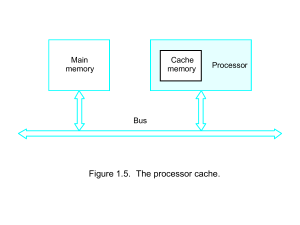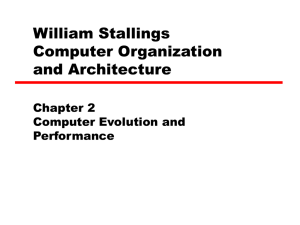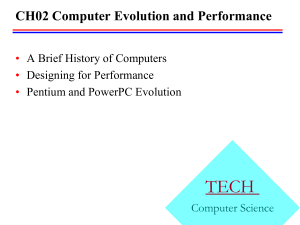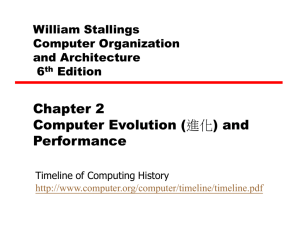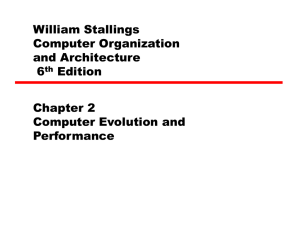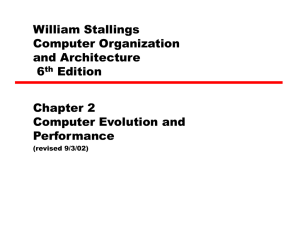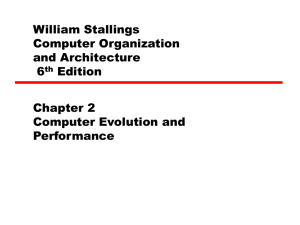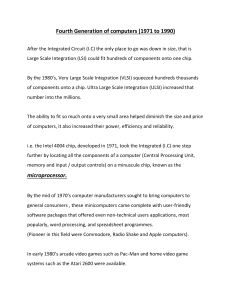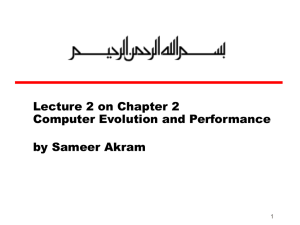02 Computer Evolution and Performance
advertisement
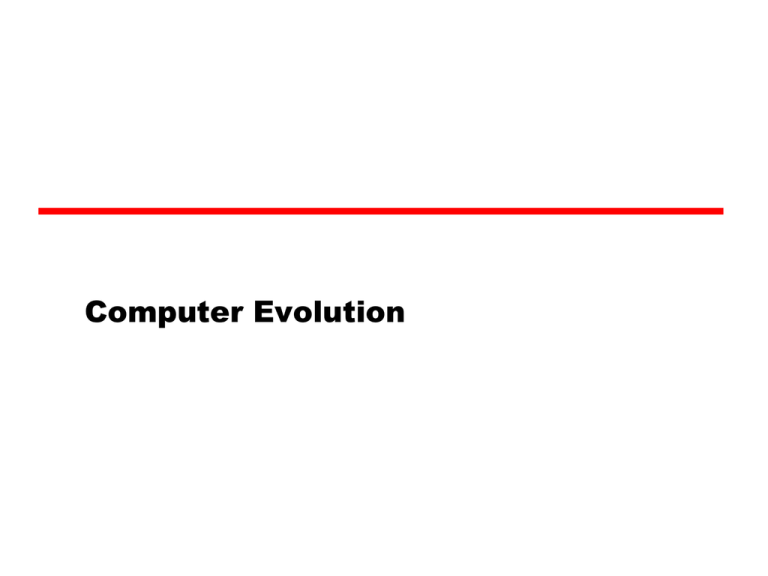
Computer Evolution ENIAC - background • Electronic Numerical Integrator And Computer • Eckert and Mauchly • University of Pennsylvania • Trajectory tables for weapons • Started 1943 • Finished 1946 —Too late for war effort • Used until 1955 ENIAC - details • • • • • • • • Decimal (not binary) 20 accumulators of 10 digits Programmed manually by switches 18,000 vacuum tubes 30 tons 15,000 square feet 140 kW power consumption 5,000 additions per second von Neumann/Turing • • • • Stored Program concept Main memory storing programs and data ALU operating on binary data Control unit interpreting instructions from memory and executing • Input and output equipment operated by control unit • Princeton Institute for Advanced Studies —IAS • Completed 1952 Structure of von Neumann machine IAS - details • 1000 x 40 bit words —Binary number —2 x 20 bit instructions • Set of registers (storage in CPU) —Memory Buffer Register —Memory Address Register —Instruction Register —Instruction Buffer Register —Program Counter —Accumulator —Multiplier Quotient Structure of IAS – detail Commercial Computers • 1947 - Eckert-Mauchly Computer Corporation • UNIVAC I (Universal Automatic Computer) • US Bureau of Census 1950 calculations • Became part of Sperry-Rand Corporation • Late 1950s - UNIVAC II —Faster —More memory IBM • Punched-card processing equipment • 1953 - the 701 —IBM’s first stored program computer —Scientific calculations • 1955 - the 702 —Business applications • Lead to 700/7000 series Transistors • • • • • • • • Replaced vacuum tubes Smaller Cheaper Less heat dissipation Solid State device Made from Silicon (Sand) Invented 1947 at Bell Labs William Shockley et al. Transistor Based Computers • Second generation machines • NCR & RCA produced small transistor machines • IBM 7000 • DEC - 1957 —Produced PDP-1 Microelectronics • Literally - “small electronics” • A computer is made up of gates, memory cells and interconnections • These can be manufactured on a semiconductor • e.g. silicon wafer Generations of Computer • Vacuum tube - 1946-1957 • Transistor - 1958-1964 • Small scale integration - 1965 on —Up to 100 devices on a chip • Medium scale integration - to 1971 —100-3,000 devices on a chip • Large scale integration - 1971-1977 —3,000 - 100,000 devices on a chip • Very large scale integration - 1978 -1991 —100,000 - 100,000,000 devices on a chip • Ultra large scale integration – 1991 —Over 100,000,000 devices on a chip Moore’s Law • Increased density of components on chip • Gordon Moore – co-founder of Intel • Number of transistors on a chip will double every year • Since 1970’s development has slowed a little — Number of transistors doubles every 18 months • Cost of a chip has remained almost unchanged • Higher packing density means shorter electrical paths, giving higher performance • Smaller size gives increased flexibility • Reduced power and cooling requirements • Fewer interconnections increases reliability Growth in CPU Transistor Count IBM 360 series • 1964 • Replaced (& not compatible with) 7000 series • First planned “family” of computers —Similar or identical —Similar or identical —Increasing speed —Increasing number terminals) —Increased memory —Increased cost instruction sets O/S of I/O ports (i.e. more size • Multiplexed switch structure DEC PDP-8 • • • • • 1964 First minicomputer (after miniskirt!) Did not need air conditioned room Small enough to sit on a lab bench $16,000 —$100k+ for IBM 360 • Embedded applications & OEM • BUS STRUCTURE DEC - PDP-8 Bus Structure Semiconductor Memory • 1970 • Fairchild • Size of a single core —i.e. 1 bit of magnetic core storage • • • • Holds 256 bits Non-destructive read Much faster than core Capacity approximately doubles each year Intel • 1971 - 4004 —First microprocessor —All CPU components on a single chip —4 bit • Followed in 1972 by 8008 —8 bit —Both designed for specific applications • 1974 - 8080 —Intel’s first general purpose microprocessor
